The Madhya Pradesh Assembly Elections of 2018 witnessed a high-stakes battle for political supremacy in the state. The assembly elections were held in a single phase on 28 November 2018 to elect members of the 230 constituencies in the state.
As the results unfolded, it became evident that neither the Congress nor the BJP had secured an outright majority, with the Congress emerging as the single largest party with 114 seats, just two short of the magic number required for a majority in the 230-member assembly. The BJP secured 109 seats, reflecting the fierce competition and the divided mandate of the electorate.
However, INC formed the government with the help of one BSP MLA, one SP MLA and four Independent MLAs. Kamal Nath was sworn in as the Chief Minister of Madhya Pradesh.
In this blog, we will explore the election results during the last three elections in greater detail by thoroughly examining them from a regional perspective, providing a deeper understanding of the electoral dynamics at play.
Regions
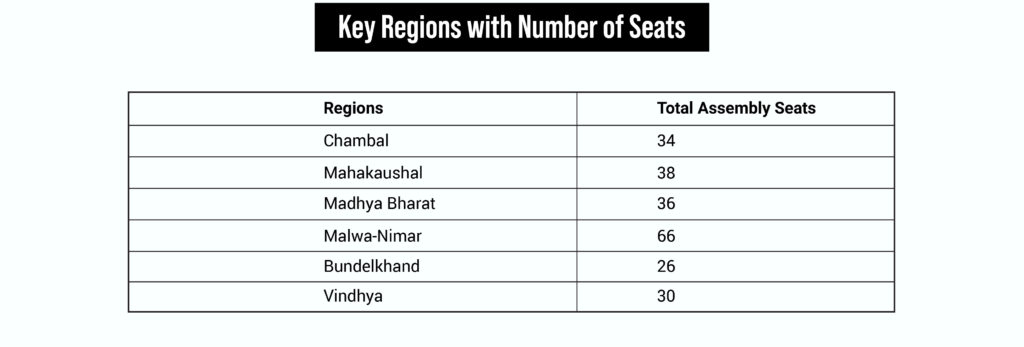
Key Regions
The state assembly elections in Madhya Pradesh witnessed a battle for political supremacy among the two major parties, BJP and INC in these six key regions over the years.
Region Wise Seats
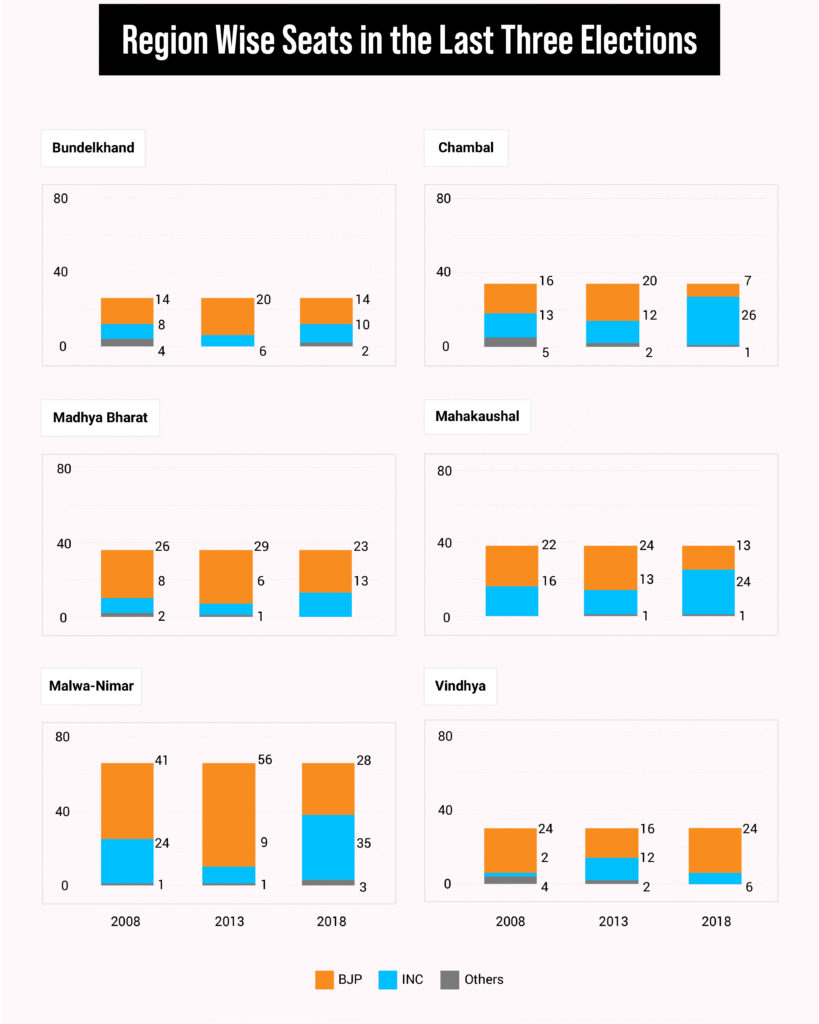
Region Wise Seats
The electoral landscape in the state exhibited a clear dominance by the BJP across all six regions over the last three elections. However, the 2018 elections marked a noteworthy shift as the INC made significant gains, notably strengthening its position in three regions: Malwa-Nimar, Chambal, and Mahakaushal. Additionally, there was a marginal improvement in its standing in the Madhya Bharat region as well.
Region Wise Vote Share

Region Wise Vote Share
When it comes to vote share, both BJP and INC have more or less maintained their overall vote share during the last three elections held in the state.
Change in Vote Share
BJP

Shift in Vote Share for BJP
When comparing the changes in vote share between 2018 and 2013, it’s notable that the BJP experienced an increase in vote share across all regions except for the Malwa-Nimar region. However, examining the party’s performance over the last two elections reveals a different trend, as it has seen a decline in vote share in all regions except for the Vindhya region.
INC
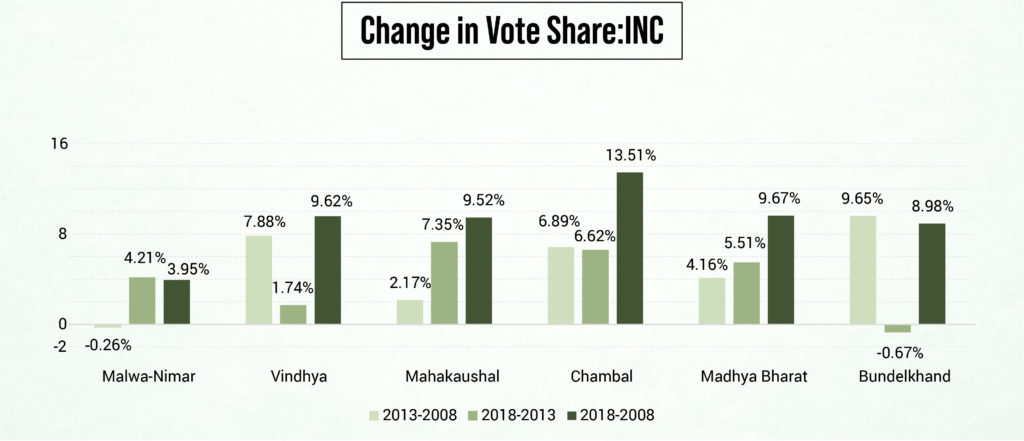
Shift in Vote Share for INC
Between the 2008 and 2018 elections, the INC successfully expanded its vote share in all six regions. Notably, in the last two elections, the party experienced a decrease in vote share only within the Malwa-Nimar region.
Region Wise Strong Holds
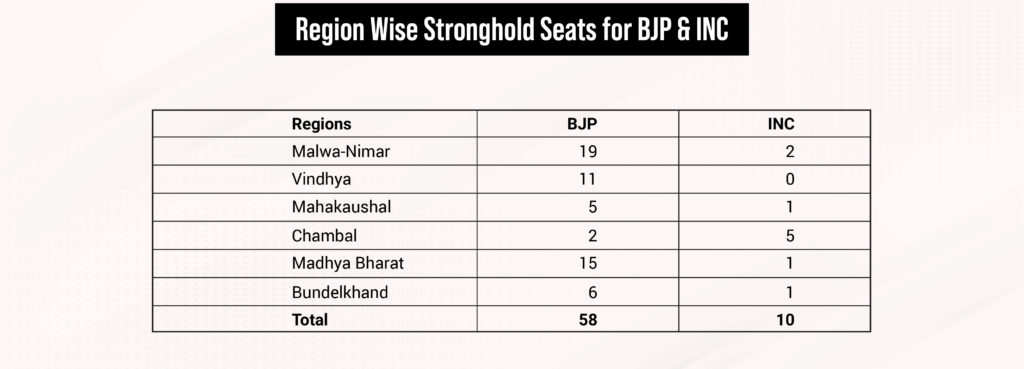
Region Wise Strongholds
Seats consistently won by a political party in the 2008, 2013, and 2018 elections are referred to as their stronghold constituencies.
In Madhya Pradesh, these strongholds constitute over a quarter of the total seats, accounting for approximately 30% of them. Notably, the BJP maintains a firm grip on the majority of these strongholds, with an impressive 85%, while the INC secures the remaining 15%.
Winning Margins in strong holds
BJP
When considering the 58 seats in aggregate across the 2008, 2013, and 2018 elections, the BJP maintained an average winning margin of 16%, 17%, and 10%, respectively.
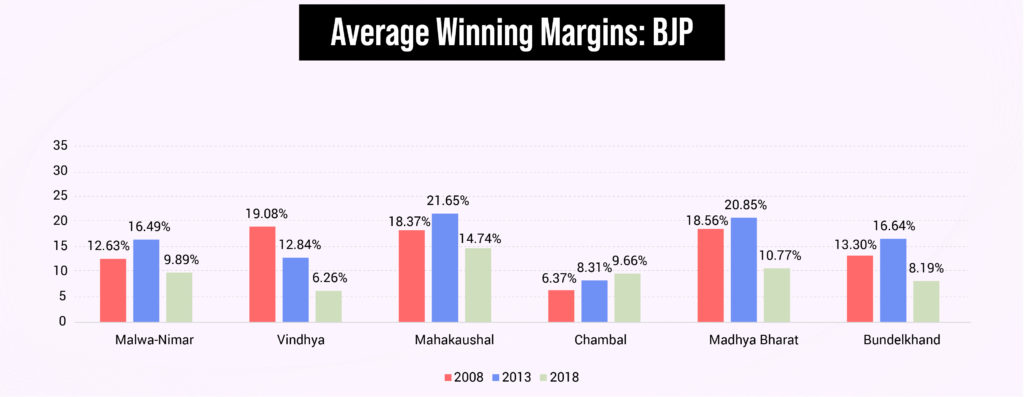
Avg. Winning Margin
Interestingly, the Chambal region has experienced a consistent uptick in winning margins, albeit relatively low. Conversely, the Vindhya region has followed an opposing trajectory, with decreasing winning margins over the same electoral periods.
INC
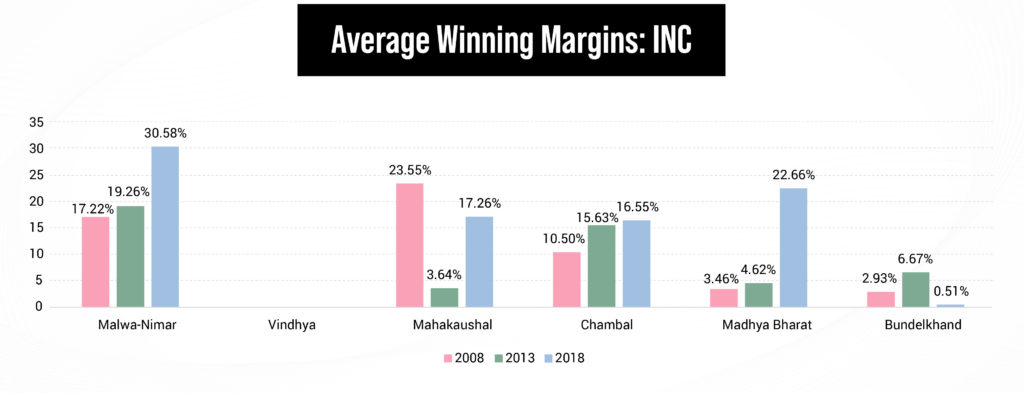
Avg. Winning Margin
The Indian National Congress (INC) has demonstrated a consistent average winning margin in its strongholds over the years. Specifically, for the years 2008, 2013, and 2018, the INC secured average winning margins of 12%, 13%, and 18% respectively in these key constituencies.
Region wise Low Margin ACs of BJP and INC
Constituencies won/ lost by margin of 5% or less.
Bundelkhand
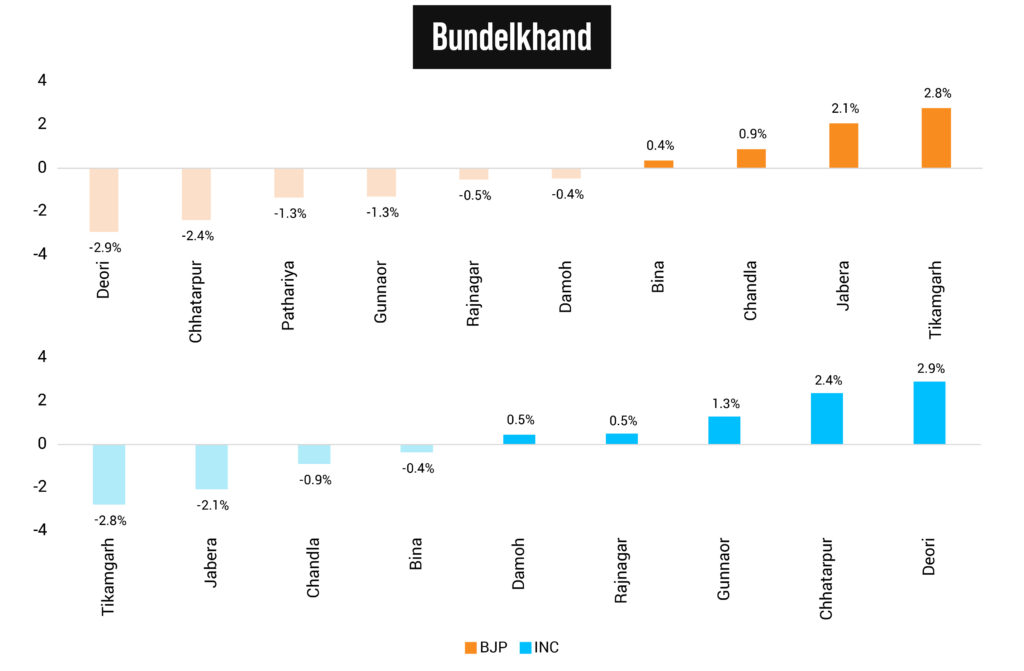
Bundelkhand
In this region, the election results were marked by closely contested races, with a slim margin of ±5% observed in 9 seats where the INC and BJP traded victories. However, an interesting exception was Pathariya, where the BSP emerged victorious. The BJP trailed closely as the first runner-up with a margin of just 1.34%, equivalent to 2205 votes. Surprisingly, in this particular constituency, the INC secured the third runner-up position, trailing behind an independent candidate.
Chambal
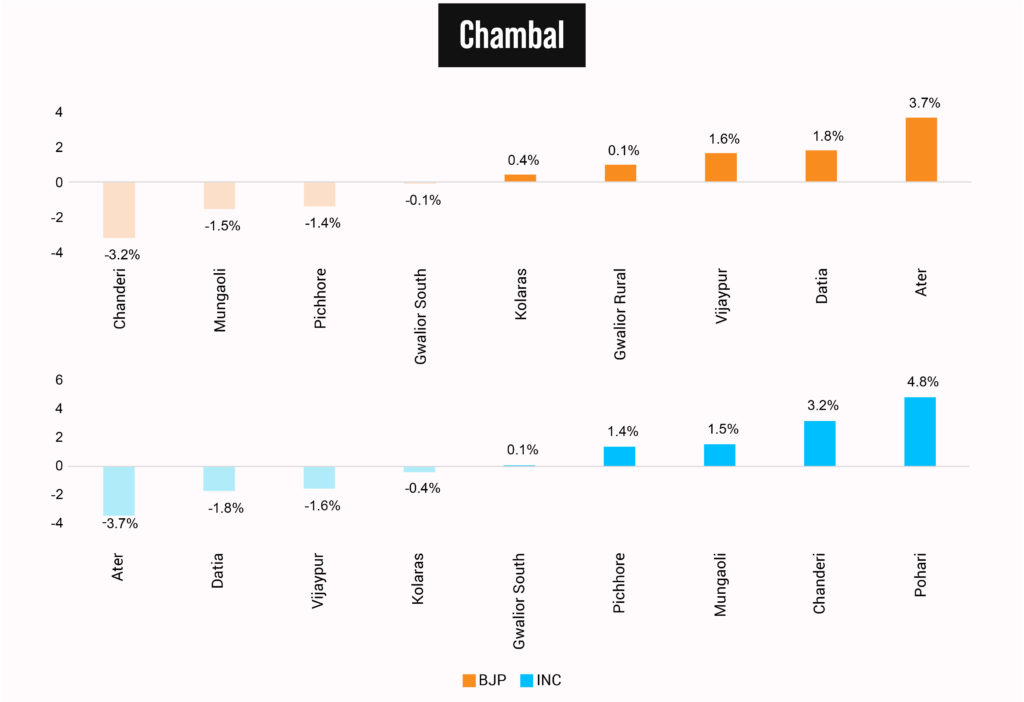
Chambal
In this region, a fiercely contested electoral battle between the BJP and INC played out across seven seats. Meanwhile, in the remaining constituencies, the BSP emerged as the primary challenger, engaging in neck-and-neck races with the INC in Pohari and with the BJP in Gwalior Rural.
Madhya Bharat
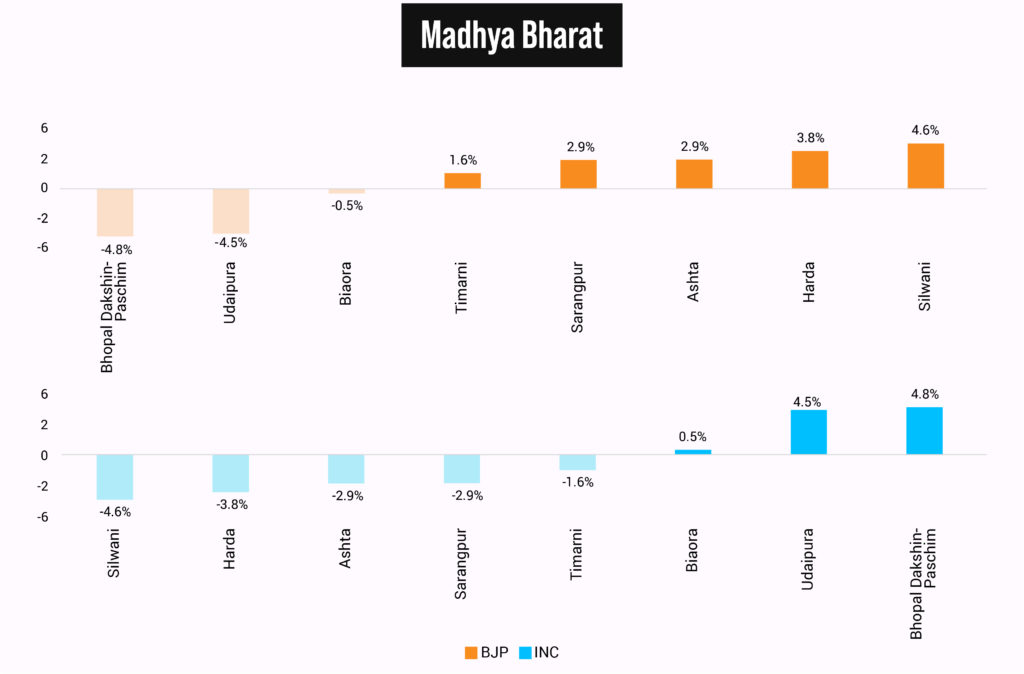
Madhya Bharat
Within the region, an intense electoral contest emerged in 8 seats, where the BJP and INC battled closely. Among these closely contested races, the INC secured victory in only 3 seats, while the remaining 5 were clinched by the BJP.
Mahakaushal
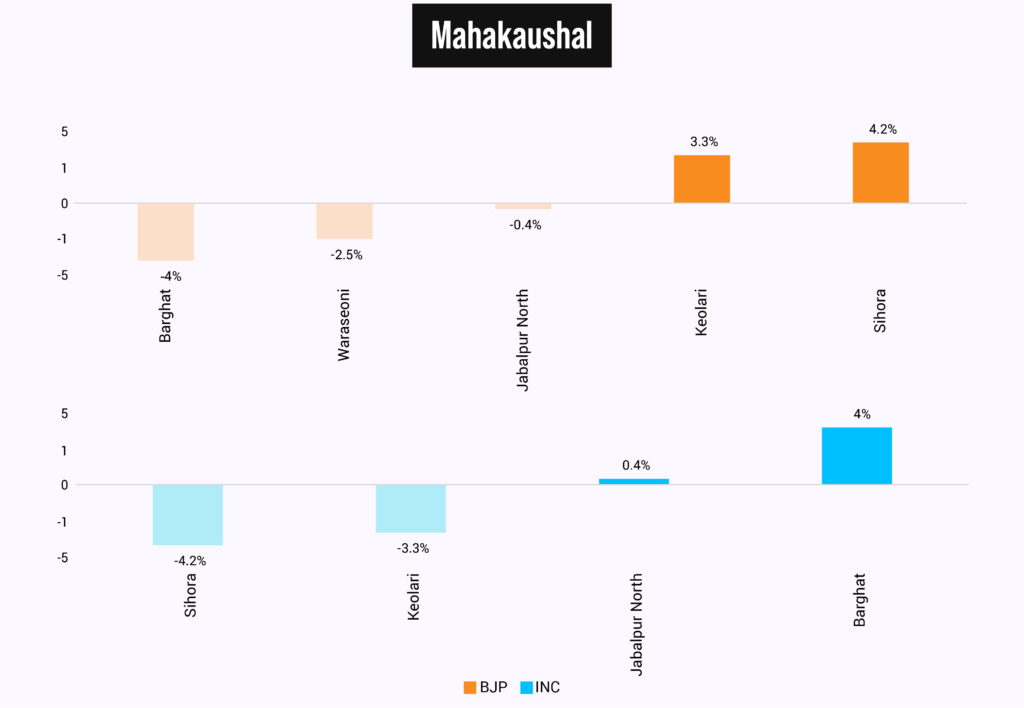
Mahakaushal
In this particular region, the electoral landscape witnessed a close competition between the INC and BJP, with each securing victory in two seats, all with margins of less than 5%. The contest primarily revolved around these two prominent parties, with one notable exception: the Waraseoni seat, which was claimed by an independent candidate, Pradeep Amratalal, with a margin of 3862 votes.
Malwa-Nimar
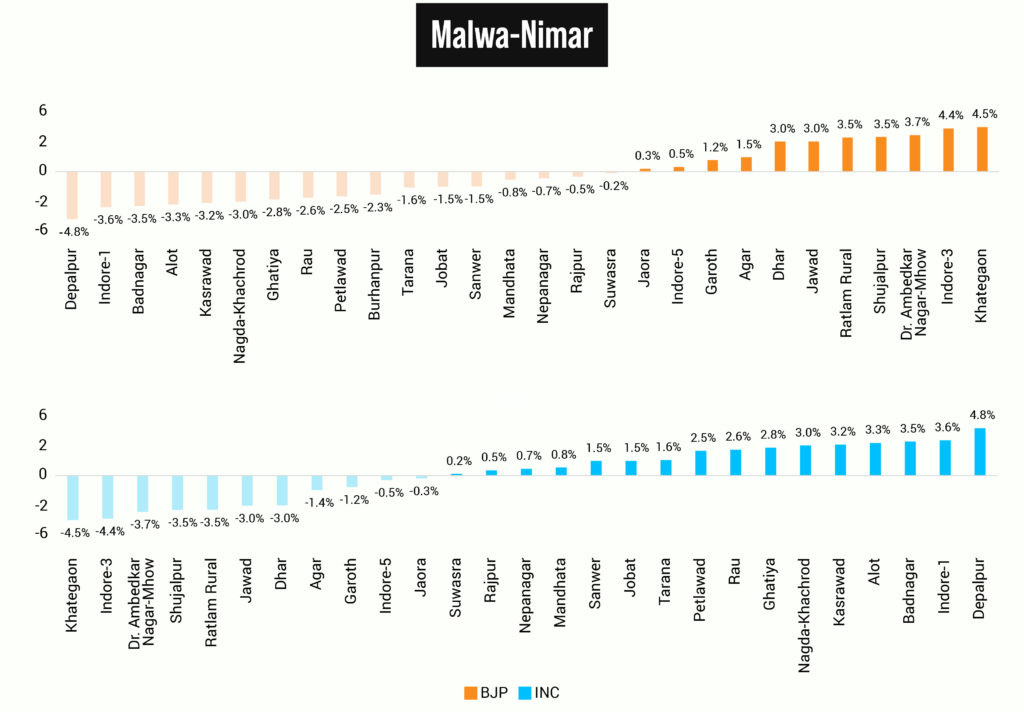
Malwa-Nimar
Malwa-Nimar has the highest number of seats, totaling 66, and so did the closely contested, low-margin seats, numbering 28. In the recent election, the BJP secured victory in 11 of these seats, while the INC emerged victorious in 16. Interestingly, one seat, Burhanpur, saw an independent candidate, Thakur Surendra, clinching victory over BJP’s Archana Didi, with a notable margin of 5,120 votes. T
Vindhya
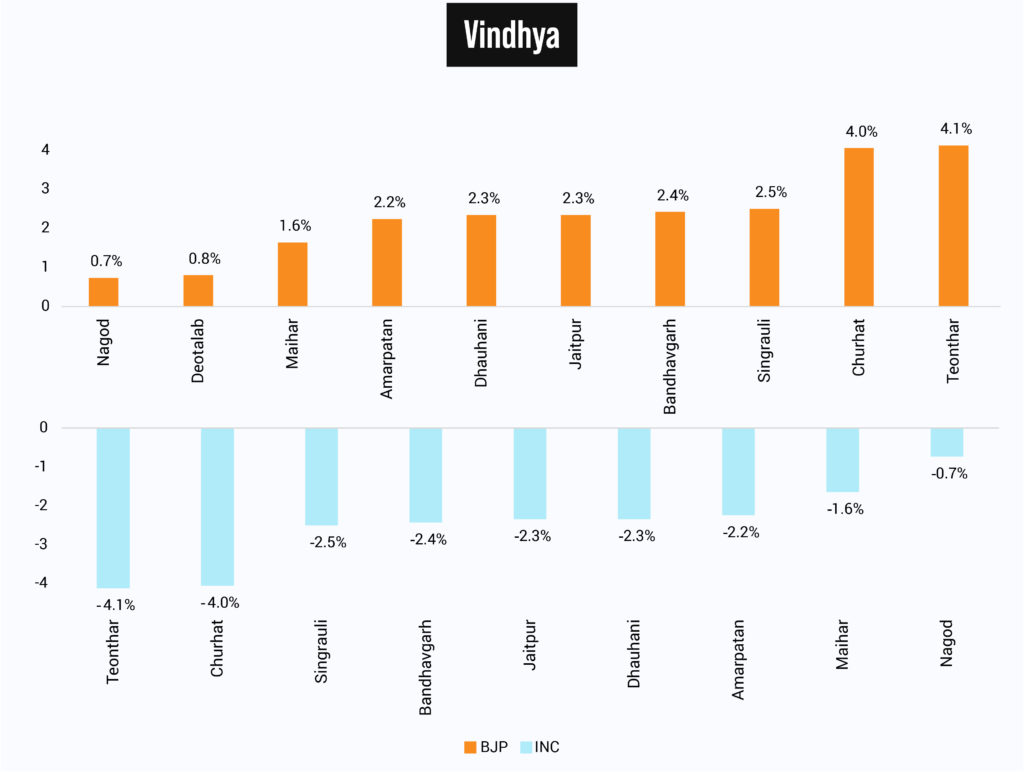
Vindhya
In the Vindhya region, the INC did not secure any narrow-margin victories, with all such closely contested wins going to the BJP.
We will be continuously exploring the political landscape of the Madhya Pradesh Assembly in greater depth for the upcoming elections in the state. Stay tuned to check out more with Meradesh App available on Appstore and Play Store.
Reach your constituents, gain insights into their motivations, and build campaigns based on data-driven strategies with the Meradesh Platform
